


Currently preparing an engineering degree in the field of Networks & Telecommunications at the University of Technology of Troyes (Master's degree), I am passionate about the world of IT, in especially cybersecurity. I am always looking for new challenges that will push the limits of my knowledge!
During my free time, I endeavour to hone my skills on dedicated plateforms such as RootMe, VulnHub or HackTheBox to learn about pentesting technics.
Even if my main passion is cybersecurity, I love spending some time developing web applications and websites for personal or university projects.
Alongside my studies, I enjoy building complex network architectures on simulation tools such as GNS3 or Packet Tracer to develop my skills and master key concepts of network engineering.
The idea for this project came to me during the first confinement in March 2020. I spent it in Ireland on a sheep farm. Its owner needed a way of tracking and keeping an eye on the flock statistics. As the lambs are sold each season, the need of having a medical history, but also knowing about the sex, the age, the breed or even the specific markings of a given animal is particularly relevant. For this very usage, I created a web application that enables the farmer to identify each of them and access, with the unique identifier of the sheep (the EID tag), all the required information.
This project has been developed in PHP with a front-end in HTML/CSS, supported by a SQL database. It enabled me to be more familiar with web development and learn about MVC architecture and other important web development concepts.
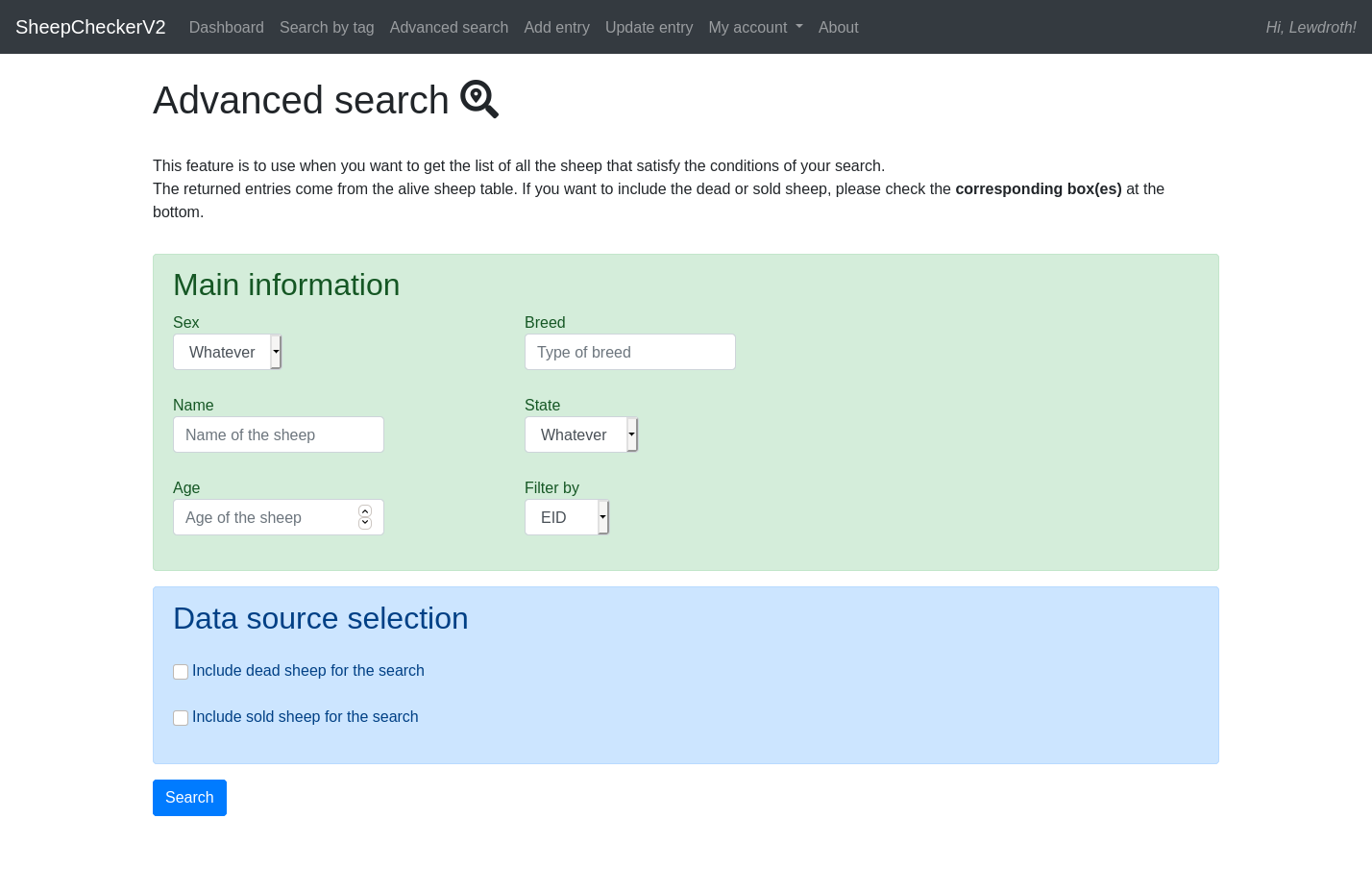
Screenshot of the Sheep search feature
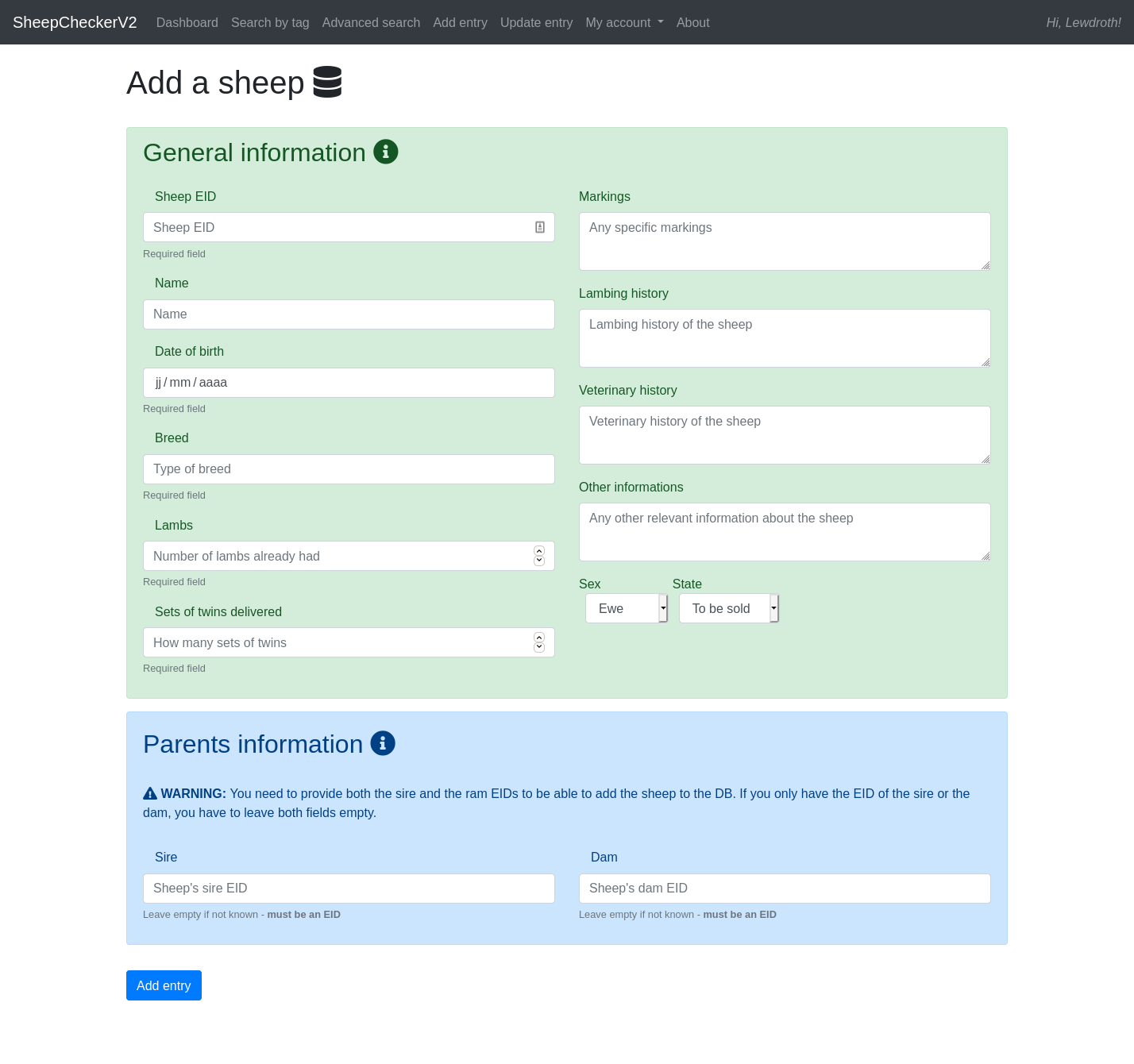
Screenshot of the Adding a sheep feature
This project was the subject of a C programming class I had to follow during my second year at the University of Technology of Troyes. The point was to create a Command Line application that enabled the staff of an airport to run it: flights scheduling, passengers registration, luggage & fleet management, as well as other actions that need to be done and executed by an employee or a passenger.
The aim was to be more familiar with the low level libraries offered by the C language, in especially the ones to read & write content from a file. All the information concerning the passengers, the airport and the flights had to be stored in a text file to be used later on by each individual deature. However, this solution was not, in my view, reliable and performant enough. Therefore I decided to create a SQL database and use the SQL library written for C. This way, I have been able to access them in a much more flexible and dynamic way, which also helped to generate stats more easily. Some Python scripts were also added to generate a passenger's boarding card and convert it to PDF and send it by email to the customer.
A very rich and interesting experience on a technical level!
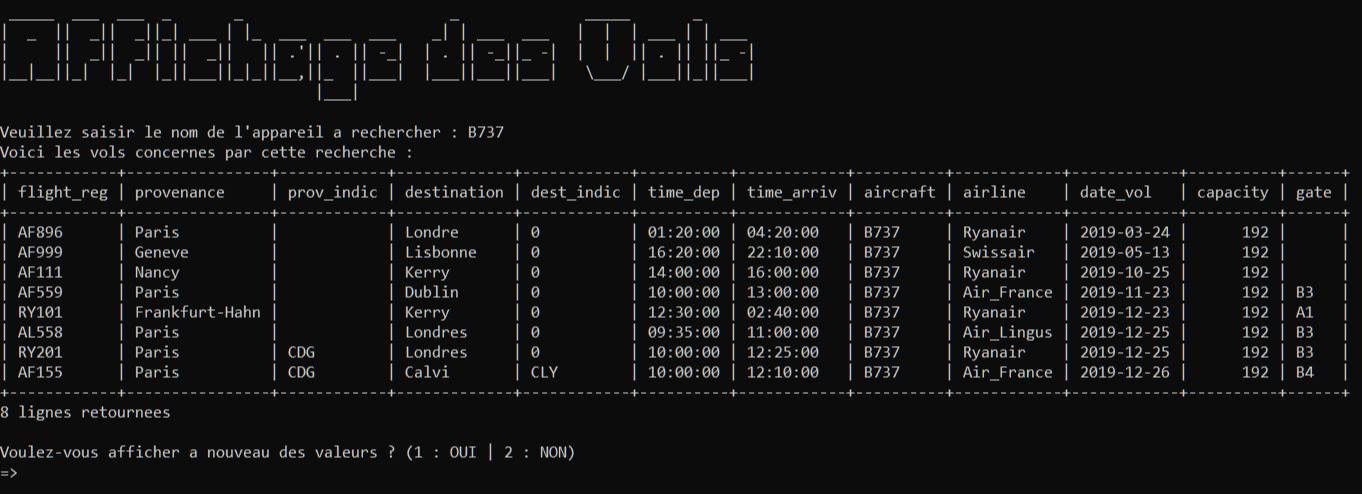
Screenshot of the flights display feature
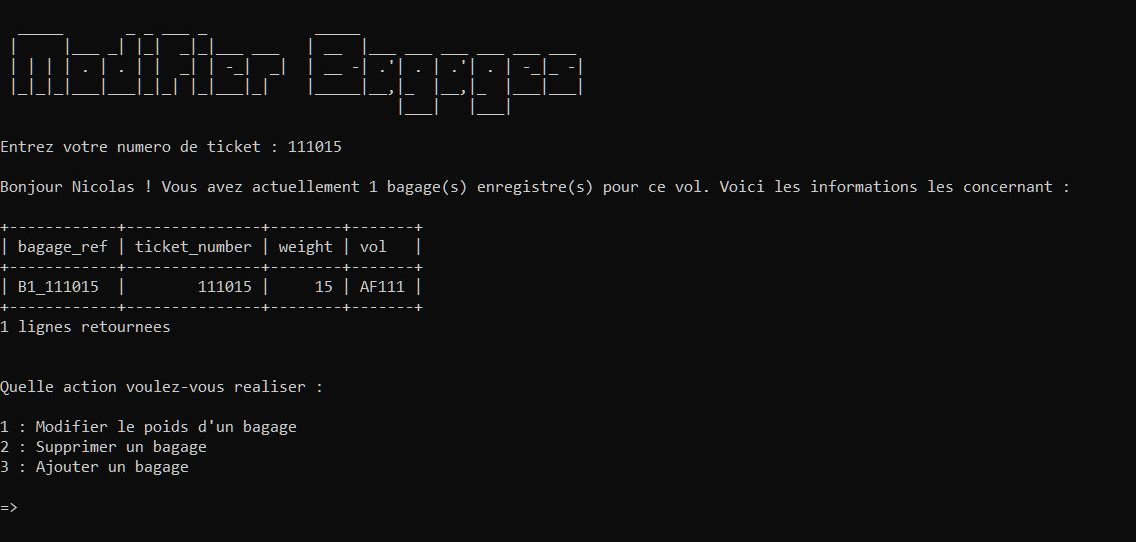
Screenshot of the luggage editing panel
As my university took part in the 'Cordées de la réussite' program, which aimed to promote sciences in mid and secondary schools, we set up a team of people that are passionate about aeronautics, and decided to create from the scratch a fully functional flight simulator, to transmit our passion and enable people to flight a plane.
Each person in the team had a very different and specific role: cockpit design, mechanics, social networks communication, funding campaigns... Mine was manage the hardware part: choose the components according to our budget, assemble them, install and configure Prepare 3D (the software we used to flight) & its add-ons, and also configure the devices (avionics).
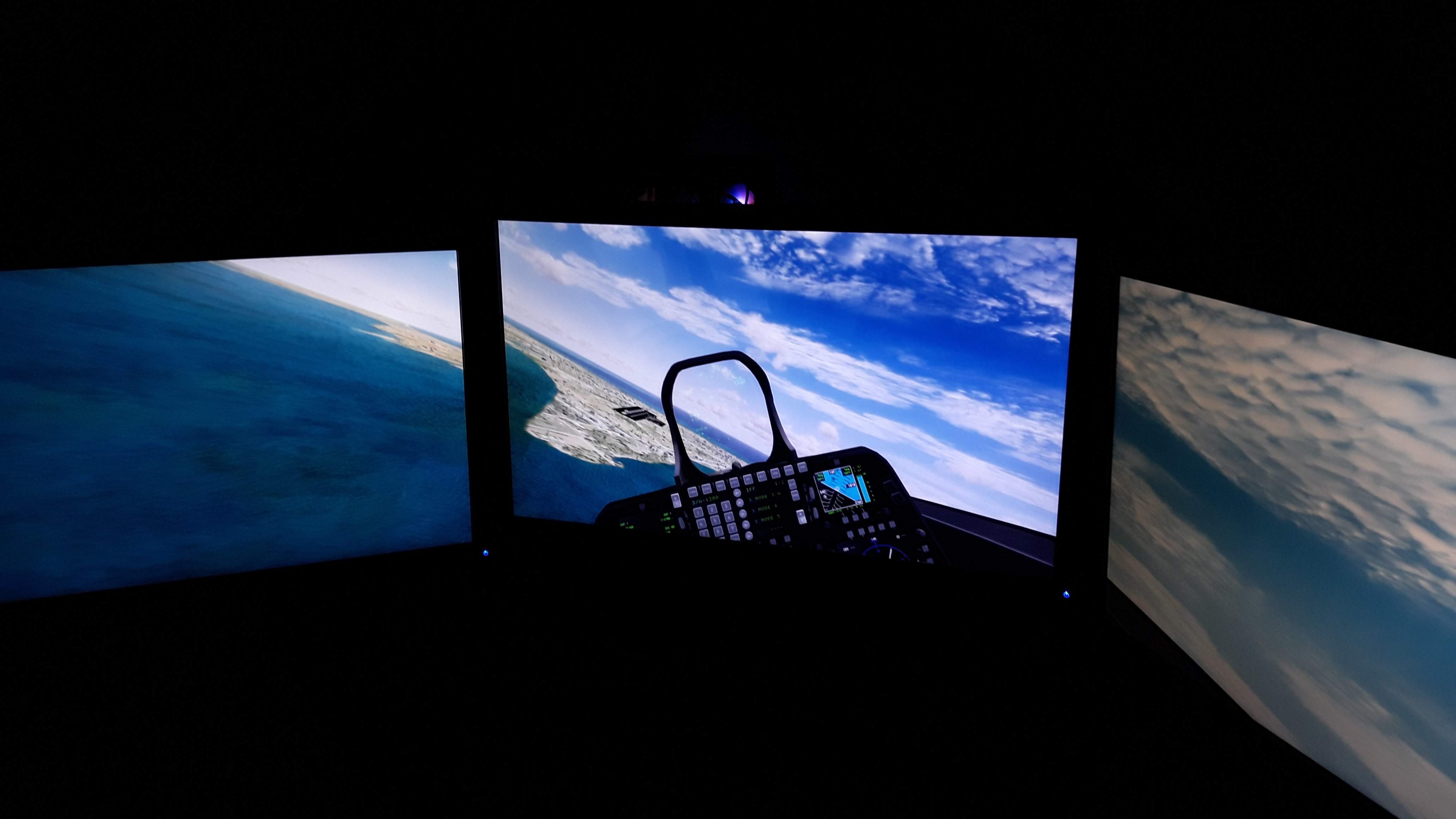
Flight demo with a FA18 Super Hornet
The point of this project was to create, based on a pre-existing card game, the corresponding Java application the enabled a player to experience the game. It was proposed by our teacher during my 3rd year for an Object Oriented Programming class, introducing main concepts and ideas of UML, Object Oriented Programming & Network programming.
The aim of the game is to get the highest score by making combinations and aligning cards together that share the same attributes (color, shape & consistency). The app development includes a graphical interface as well as Virtual Players that can play with different difficulty levels.
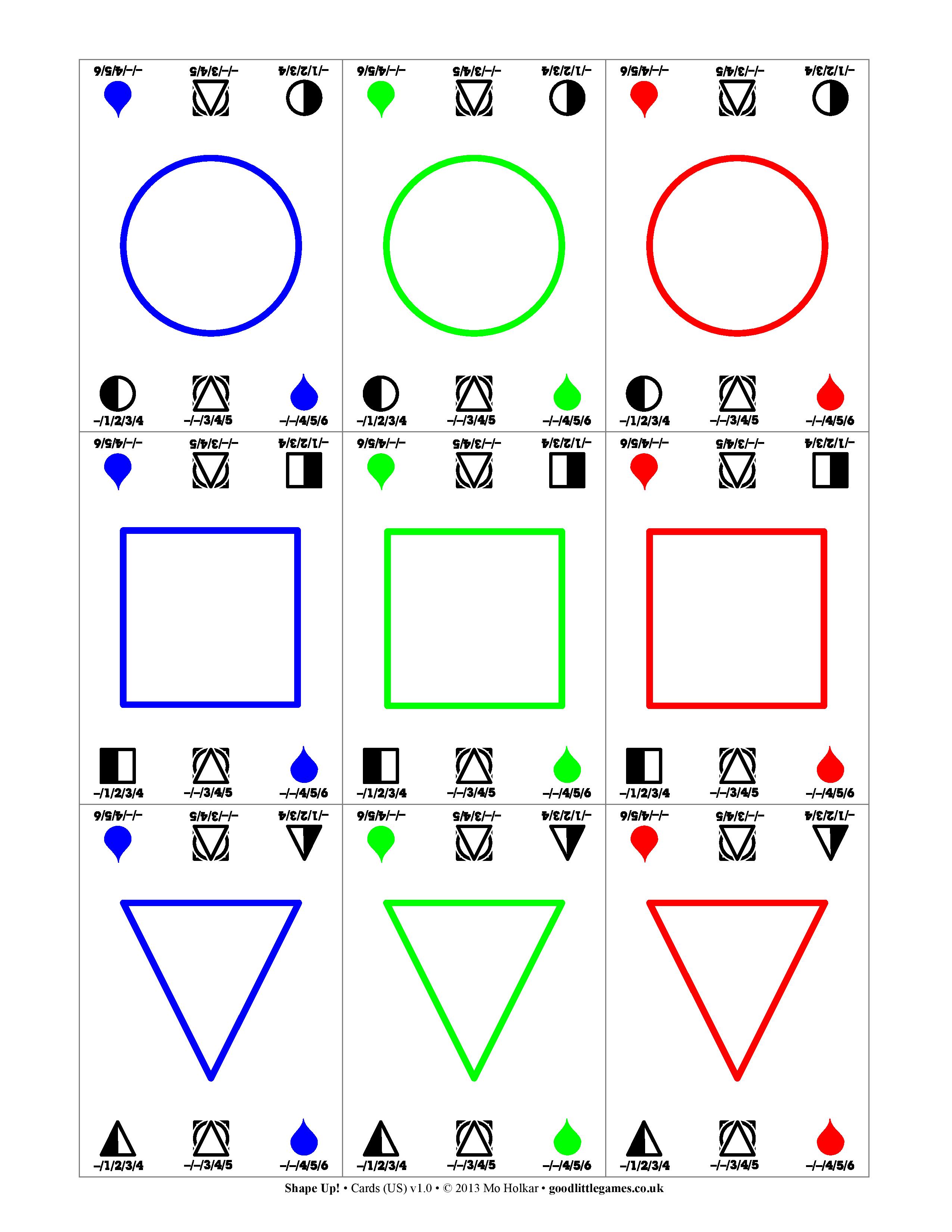
The set of cards used to design the game